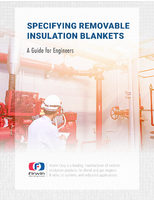INDEX to Launch Kinematic Lathes with Industry-Leading Rigidity and Is Offering a Demonstration Video on a Free Memory Stick
Share:
The higher the resonant frequency (RF) of a machine tool's structure, the greater its inherent stiffness and the more difficult it is for machining forces to induce vibration. With this in mind, German CNC lathe builder, INDEX, has redesigned its patented SpeedLine C-type mill-turning centres to increase their RF above that of all other lathes on the market, including existing models in its own range. Sole agent, Geo Kingsbury Machine Tools, will launch the machines in the UK at MACH 2008.
Using the RF measure, the new C-type lathes are over twice as stiff, ie rigid, as the established INDEX G-series models of equivalent capacity. It means that there is more latitude for finding the 'sweet spot' for any combination of toolholder, cutter and workpiece material, allowing depth of cut to be increased for maximum metal removal rate.
Apart from increasing productivity, high rigidity and the lowering of machine tool vibration also ensure good surface finish of the machined part, prolong tool life and reduce noise. Better damping leads to higher accuracy machining, even for strenuous applications involving intermittent hard turning and reaming.
The SpeedLine C-type 42 mm and 65 mm bar automatics, when launched in 2005, were the first in the world to replace conventional compound turret slides with two interconnected steel plates sliding directly over the machine bed. The recent redesign of the range has seen these machines improved and two new models introduced with 30 mm and 90 mm bar capacities.
At the same time, INDEX has reorganised C-type flow line assembly at its Esslingen factory, streamlining production and increasing throughput. Whereas each machine used to spend one and a half days at each of 18 stations, this has been reduced to one day at each of 15 stations.
Said Richard Kingsbury, managing director of the UK agent, "The reorganisation has helped to keep machine cost down while maintaining top build quality.
"Further downward pressure on capital cost will result from economies of scale, as INDEX is planning to increase output of C-type machines by two-thirds in the second full year of production compared with the first."
The defining characteristic of the lathes that provides such high RF and stiffness hinges on the actuation of the turrets. Each is mounted on a front plate while an interconnected rear retaining plate is driven kinematically from behind the machine bed. The system is so novel and difficult to visualise without seeing the machine in action that Geo Kingsbury has made a video of the lathe that it will send on a memory stick to interested parties.
The critical advantage of the sliding plate system is that the distance between the turret centreline and the point at which it is driven is much shorter than for a compound slide. The turret and drive plates are fitted with ceramic-coated, hardened tool steel strips at top and bottom which slide over a third plate of surface-hardened cast iron fitted into the bed, the latter plate being effectively sandwiched between the other two.
The parallel kinematic drive to the rear plate is now effected by two (rather than the previous three) ballscrew-actuated rods at the back of the machine, one vertical and one horizontal. Glass linear scales provide positional feedback.
There has been another alteration to the C-type design whereby three separate turrets are provided instead of one single-sided and one double-sided turret. This allows greater flexibility of machining, especially when three tools are in cut simultaneously.
Turret 1 moves in X,Y and Z above the spindle centreline and works at the main spindle; turret 2 mounted below the spindles operates in X, Y and Z at either end; and the motion of upper turret 3 is restricted to the X-axis and works only with the counter spindle, which moves in Z.
Up to 14 tools in each turret means that 42 VDI-20 tools can be deployed, although if a user wishes to continue working with VDI-25 toolholders, 10 stations are available per turret. Repeatability of tool tip position is ± 8 microns, even with angled tools up to 100 mm long. Tool drive is up to 8,000 rpm at all positions.
There are two sizes of machine frame, designated C100 and C200, the former being the host for the 30 and 42 mm bar capacity spindles and the latter (to be shown at MACH 2008) for the 65 and 90 mm spindles. Distance between the main and counter spindles is 510 and 710 mm respectively.
All models are fast, with 1g acceleration in X and Z up to 60 m/min for the smaller machines and 50 m/min for the larger models. Main spindle rating varies from 9,000 rpm / 20 kW for the smallest machine to 3,500 rpm / 23 kW for the largest. C-axis resolution is 0.001 degrees. The patented spindles are manufactured in-house and are liquid-cooled. The liquid passes continuously through a chiller unit and is used to keep the electrical cabinet cool also.
Contact: Richard Kingsbury, Managing Director.
Geo Kingsbury Machine Tools Limited
Quay Lane, Hardway, Gosport, Hants, PO12 4LB.
Tel: 023 9258 0371.
Fax: 023 9250 1741.
E-mail: mtools@gkholdings.com
Web site: www.gkholdings.com
THE RIGHT IMAGE Ltd,
PO Box 42, Twickenham, TW1 1BQ.
Tel: 020 8891 0603.
E-mail: therightimage@aol.com
Contact: Chris Wright.




